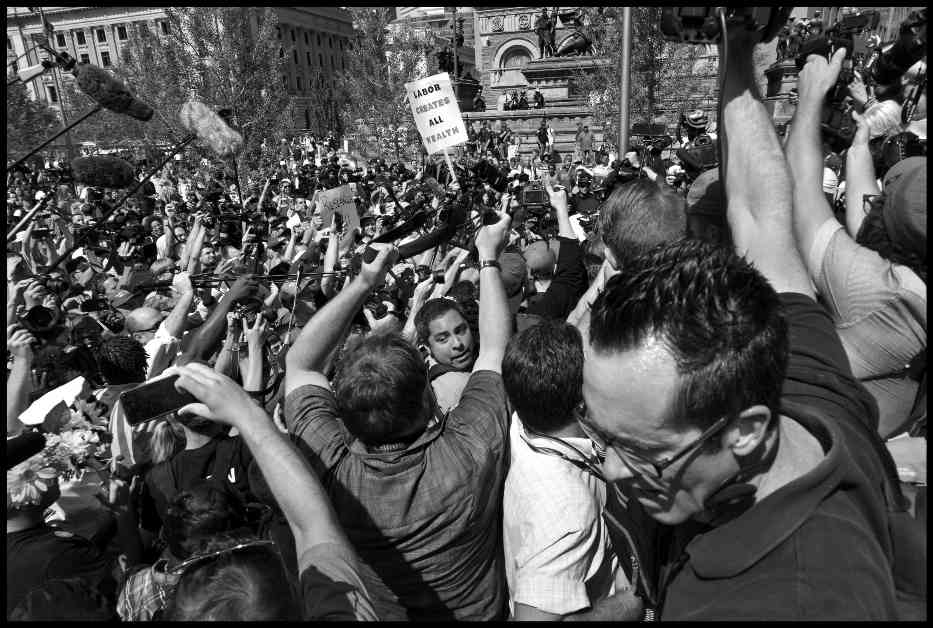Some 50,000 visitors are expected to descend on Chicago for the Democratic National Convention (DNC) as delegates come together to nominally pick the party’s 2024 presidential candidate and their running mate. Many organizations will protest around the city—from pro-Palestinian demonstrators to abortion rights groups and anti-poverty coalitions—and some are still fighting to march within “sight and sound” of the DNC’s United Center location.
In 1968, photojournalism captured the clashes between anti-war protesters and police, reporting the truth beyond when then mayor Richard J. Daley decried protesters as “terrorists” to the media. Denise Keim founded the Chicago Center for Photojournalism at the beginning of 2023 to make a home for the craft and teach others how to harness visual storytelling. Today, the center keeps the tradition alive, hosting exhibitions, lectures, and classes from its storefront gallery in Uptown.
When you walk inside the center, it feels less like a gallery and more like a storefront. Uptown neighbors pop in and peruse the photos on display throughout the day—some aspiring photojournalists, others with storied careers themselves. Now, Keim is taking lessons from her 30-year career to create a community of practice in Chicago.
The center plans to host two exhibitions focusing on protest photography. From August 14 to September 30, “In Politics: Conventions and Campaigns” will showcase Keim’s imagery from the past two RNCs and from photojournalists Brendan Bullock and Nima Taradji. After the DNC, the center will host a postmortem on what student photographers captured, from the convention itself to the protests surrounding it.
Slated to go up later in the season, “In Protest: Global Activism” is accepting public submissions for photographs depicting “the spirit of questioning the status quo” until August 31. The industry might be in trouble, with professionals left without places to make a living, but audience appetites for good visual journalism haven’t exactly gone away.
With the advent of smartphones and social media, photography is now more accessible than ever. While the industry might be in trouble, audience appetites for good visual journalism haven’t exactly gone away. For Shawna Matten, occupational instability has made photojournalism a labor of love more than profit. But being able to capture people and stories that often get missed keeps her coming back.
“Our work is always to get a picture from a different angle than someone else and make sure we tell a holistic story,” she said. “You could easily manipulate an image to say a different story than something that’s not actually real. As a photojournalist, it’s our job to make sure that we’re telling the story of what’s actually happening.”
In conclusion, protest photography in Chicago has a rich history and continues to play a crucial role in documenting social movements and activism. The Chicago Center for Photojournalism is at the forefront of preserving this tradition, providing a community for aspiring photographers to learn and grow. Through exhibitions and classes, the center ensures that the power of visual storytelling remains alive and impactful.


